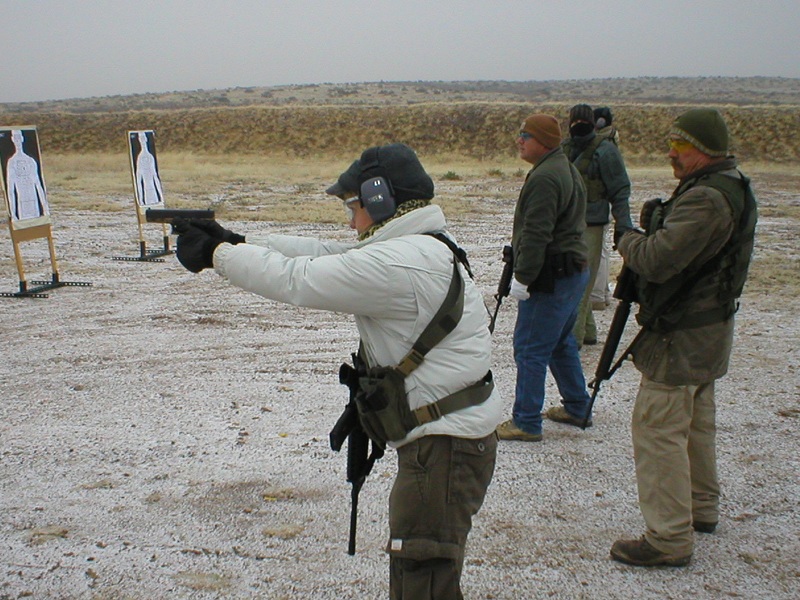Harsh Conditions Outside? Train Anyway!
Terry Nelson 07.26.19

By now, you know I am an advocate of an ongoing training regime for your defensive lifestyle. I believe in training with a purpose, regardless of the subject matter, but here I am mostly talking of your time on the gun range. I know many of my students go to the range on a regular basis. However, some will often put their training on hold if the forecast calls for harsh conditions outside or if the course perhaps includes some physical exertion. In other words if the training involves getting outside their comfort zone they will just flat avoid it.
It goes without saying only you can determine what hardships and harsh conditions you are willing to endure in training. Just realize you will not get to select a perfect time, place or weather condition if the fight comes to you.
Understand there are times and circumstances that I will draw the line for myself and students when on the gun range. Lightning, flashfloods and hail are a few of those.
The following are just a few of the challenges we face in training on a routine basis in the desert southwest; Despite what mother nature throws our way, we train anyway.
Wind
I am not just talking a breeze, if we were to never hit the range on high wind days we would get little training done. What are high winds? Anything over 20 miles per hour begins to get difficult. We have carried on with training in winds 30 plus mph but it can get to the point where it becomes too hazardous from blowing debris or being unable to keep targets up.

Being out in these conditions can be frustrating and downright miserable. Some tricks you can employ to keep shooting; use only steel targets and the use of spray adhesive and staples for your paper targets to keep them on the backing and lots of weight to keep stands in place.
Heat

In our area of the desert southwest we often experience of over 100 degrees Fahrenheit in the summer months (110 + is not unheard of). Most of the time it is dry heat due to the lack of rainfall in this region. Regardless of humidity, heat can be very dangerous to those not acclimated to it. Good head cover, neck cover, sun screen and staying hydrated are a must. Again this category is one that if we were constantly concerned because of high heat we would not get much time on the range in this area.
Rain

Desert means low rainfall, but when it does rain here it can often be violent thunderstorms producing lightning and hail with extreme winds. I will draw the line in these conditions. However a light to moderate rain (with no lightning) we just push through. Here again the use of steel targets or the heavy wax paper style targets combined with spray adhesive will allow for your range time to continue.
Cold

Even in the desert we experience some very cold temperatures and snow in the late winter months. Most often it is our normal winds coming straight out of the north which makes the wind chill factor jump exponentially. Training in the cold offers some of the greatest challenges for us because we just don’t have these conditions all that often. So shooting with heavy coats, gloves and sometimes layers of cloths is outside the norm. But we train anyway.
Critters

No lack of critters in the desert that will sting or bite. Bees, wasps, ants, scorpions, centipedes and of course rattlesnakes are the norm rather than the exception in the southwestern US. I once had a student that refused to stay on the range once a snake was spotted (wasn’t even a rattler). Your geographic area no doubt has its own variety of wildlife that could be of concern. We insist on good footwear (no flip flops or open toed shoes) in part because of the hazards these animals can present. If you have allergies to insect bites and stings then being prepared with the necessary epipen or other medical interventions is critical.
Obviously if conditions are just too dangerous then err on the side of caution and safety. The end result of pushing on and training under hard conditions is that you will become vastly more capable and confident in your abilities. Both are critical in a life threatening event.

